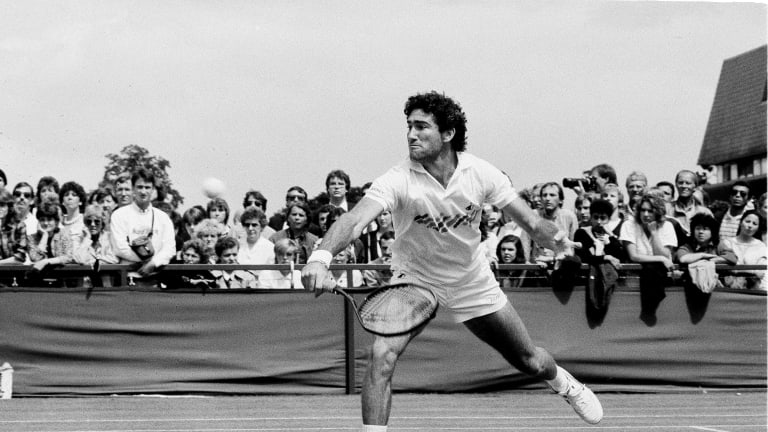In 1973, it looked as if men’s tennis finally belonged to its players. A union—the ATP—had been formed in ’72 and proved its power by convincing 81 members to boycott Wimbledon. It seemed only a matter of time before the pros would run the show.
That’s not how it worked out. The game’s amateur officials slowly regrouped. By the late ’80s, they formed a Grand Slam Committee and made the majors more lucrative and prestigious than ever. They also continued to share leadership duties in the game’s governing body, the Men’s Pro Council.
By the 1988 US Open, the players had had enough. With Hamilton Jordan, Jimmy Carter’s former chief of staff, leading the way, the ATP decided to announce that the players would go their own way. At first, the Open’s officials refused to let the players use the logical place for the announcement, the tournament’s interview room. So Jordan led his troops off the grounds. With Brad Gilbert (pictured below), Mats Wilander, Yannick Noah and others beside him, he announced their breakaway in a parking lot at the National Tennis Center.
